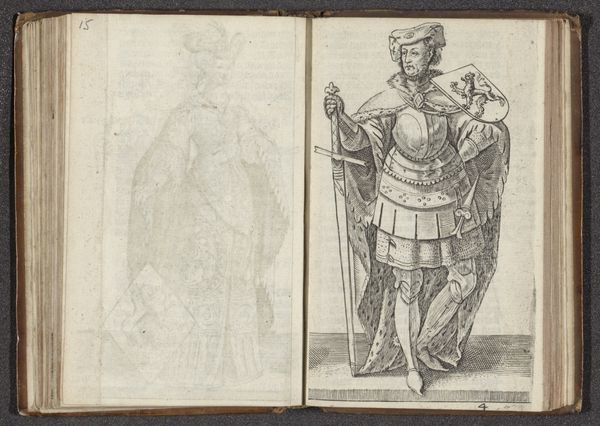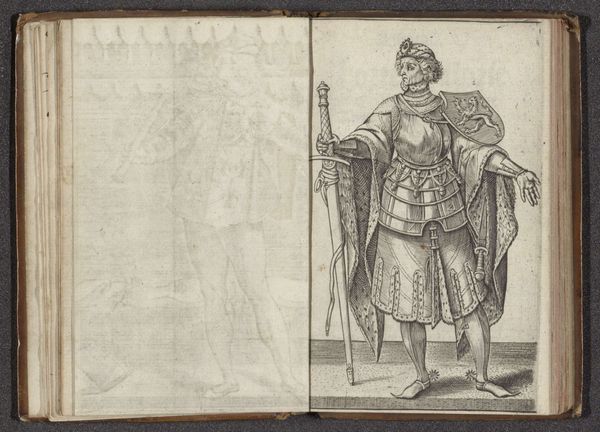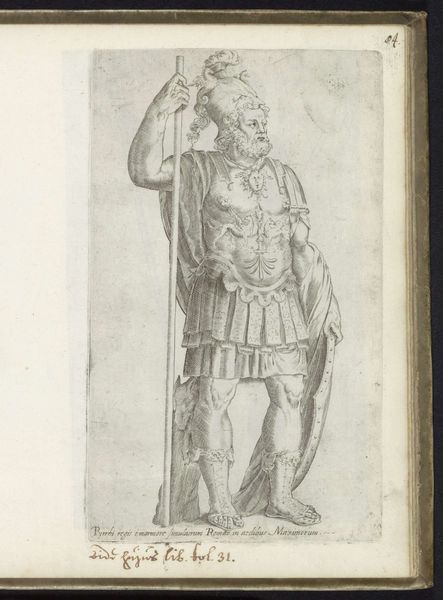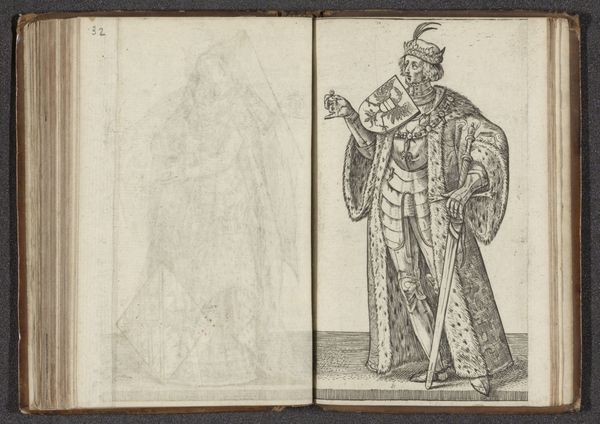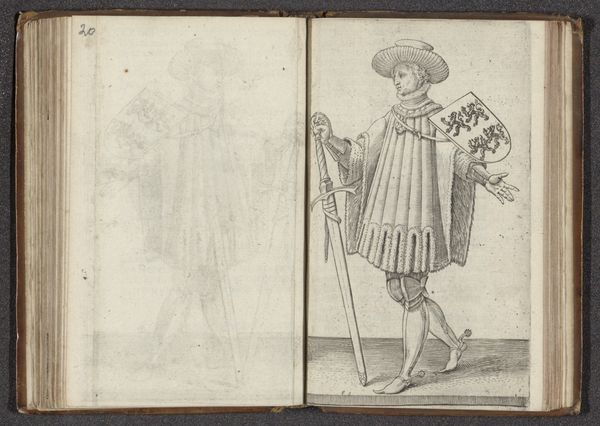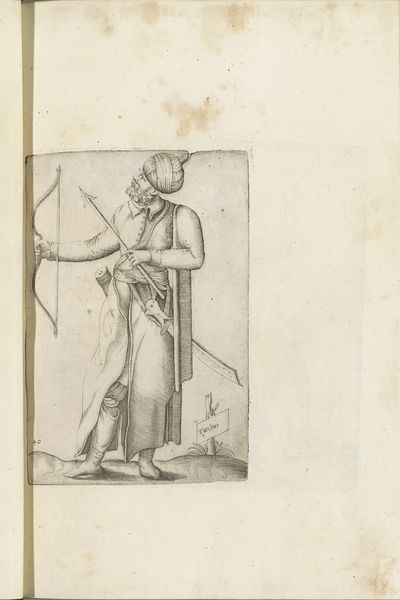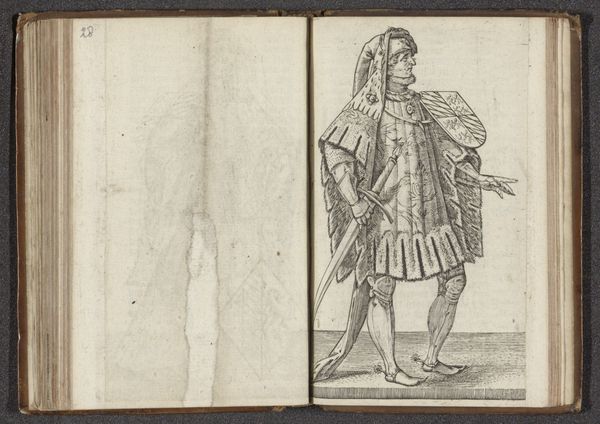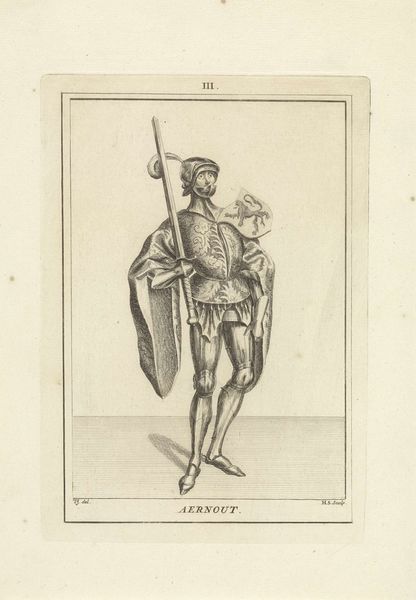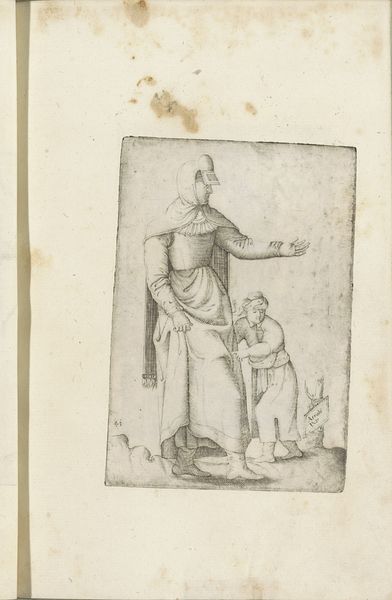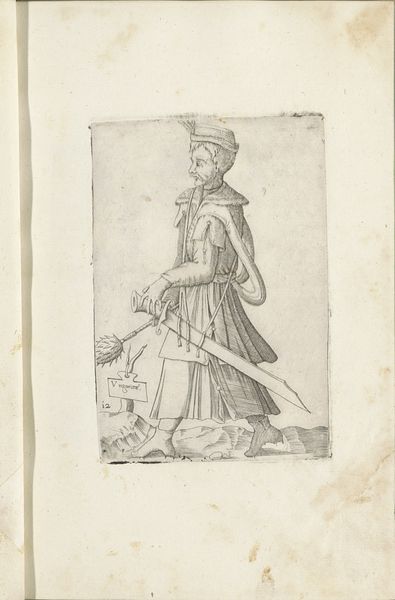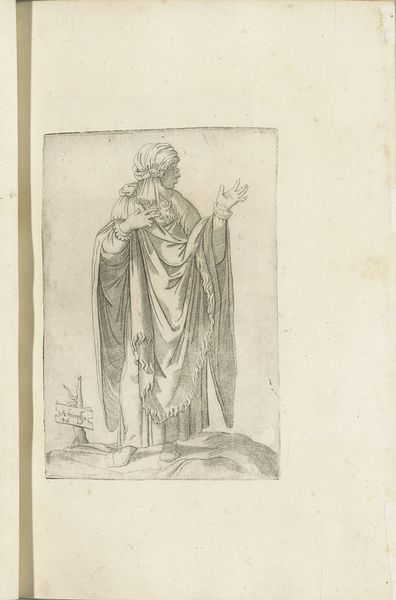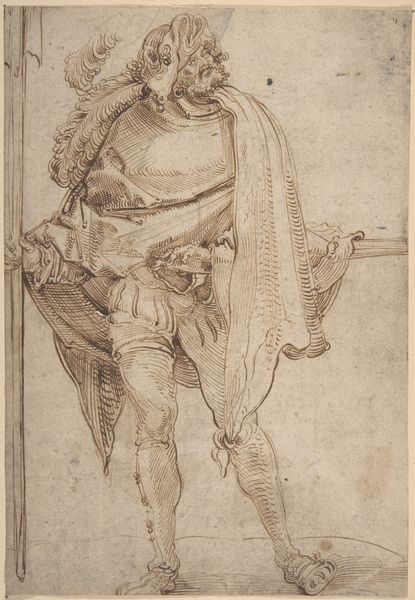
drawing, print, paper, ink, engraving
#
portrait
#
drawing
# print
#
mannerism
#
paper
#
11_renaissance
#
ink
#
coloured pencil
#
history-painting
#
engraving
Dimensions: height 135 mm, width 85 mm
Copyright: Rijks Museum: Open Domain
Curator: Let's turn our attention to Hendrick Goltzius's "Graaf Robrecht I de Fries," created around 1586-1587. It’s an engraving rendered in ink on paper, currently held at the Rijksmuseum. Editor: Immediately, the figure commands attention—it has such precise, linear energy! It’s giving off a certain confident swagger… slightly burdened. Curator: Indeed. Goltzius, known for his Mannerist style, often explored themes of power and historical figures. What's fascinating is the medium itself—engraving. Each line is deliberate, a result of painstaking labor with sharp tools on a metal plate before being transferred to paper. Consider the societal context: prints like these circulated widely, playing a vital role in shaping public perceptions of nobility and history. Editor: The craftsmanship is undeniable, but there’s also an element of almost… campy theatricality. I can’t help but think about how such detailed rendering also showcases Goltzius’s sheer skill, in the process maybe celebrating the act of making the portrait as much as Robrecht himself! Curator: An astute point. The very act of producing such images—replicable yet meticulously crafted—opens up questions of accessibility and control over representation. While ostensibly honoring Robrecht, Goltzius also subtly asserts his own creative agency, turning labor into artistry. The lines, the hatch marks—they become metaphors for power, influence, and artistic innovation. Editor: He almost feels like a paper doll of himself, though… flat but brimming with symbols. Perhaps the artwork implies even those in charge still exist within a fabricated world, their power manifested through visible, crafted representation. Curator: It also reminds us that depictions of power always serve ideological purposes, reinforcing hierarchies and shaping collective memory. The texture and detail in that metal plate create a story all its own. Editor: It feels right, the figure isn’t just present; it’s presented. Curator: A crucial distinction—well observed. Thanks to both Hendrick Goltzius and the age of engraving, such history gets recorded, shaped, and shared.
Comments
No comments
Be the first to comment and join the conversation on the ultimate creative platform.
